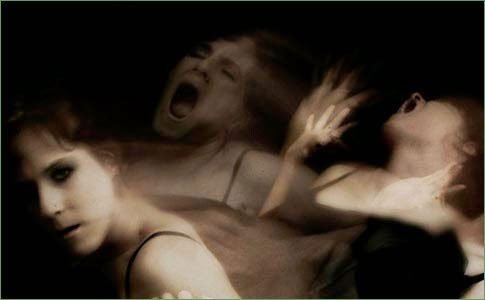Health Centers > Mental Health Center > Mental Disorders > Miscellaneous Disorders
Miscellaneous Disorders
Miscellaneous disorders does not refer to any official Diagnostic and Statistical Manual of Mental Disorders, 4th edition (DSM-IV) classification but rather to psychiatric diagnoses not covered elsewhere in this book.
Miscellaneous Disorders
Generally, these diagnoses are either less common, less understood, or less frequently the focus of psychiatric practice than the disorders previously covered.
Although many of these disorders are not uncommon, they seldom come to psychiatric attention for a variety of reasons (e.g., they may be treated by other medical specialists, patients may not mention them, or they may not be detected adequately). Table 9-1 lists the categories of disorders discussed in this chapter.
- Dissociative Disorders
- Dissociative Identity Disorder
- Dissociative Fugue
- Dissociative Amnesia
- Depersonalization Disorder
- Somatoform Disorders
- Sexual and Gender Identity disorders
- Sexual Dysfunctions
- Paraphilias
- Sexual and Gender Identity disorders
- Sleep disorders
- Dyssomnias
- Parasomnias
- Factitious disorders
Dissociative Amnesia
In dissociative amnesia, an individual develops a temporary inability to recall important personal information. The amnesia is more extensive than forgetfulness and is not caused by another medical or psychiatric condition (e.g., head trauma). The inability to recall information may take several forms. In localized amnesia, information is lost for a specific time period (e.g., a time associated with trauma). In selective amnesia, some information during a given time period is retained but other information is lost.
In generalized amnesia, personal information is lost for the entire life span. In continuous amnesia, there is an inability to recall information from a single point in time to the present. In systematized amnesia, particular categories of information are lost to retrieval.
Dissociative amnesia is more common in people exposed to trauma, for example, exposure to battle or natural disaster. ![]()
Somatization Disorder
Somatization disorder is diagnosed when an individual has multiple medical complaints that are not the result of medical illness. The specific DSM-IV criteria are narrow and specific, requiring
- Pain in four different body sites or involving four different body functions;
- Two gastrointestinal symptoms (other than pain);
- One sexual symptom (other than pain); and
- One pseudoneurologic symptom (other than pain).
In addition, some symptoms must have begun before age 30 and persisted for several years. Individuals with somatization disorder often have a history of complex medical and surgical treatments that may actually lead to iatrogenic complications of treatment. Patients with somatoform disorder frequently have multiple physicians, make frequent office and hospital visits, and may seek disability because of their conviction that they are severely and chronically medically ill. ![]()
Schizophrenia
A common and serious mental disorder characterized by loss of contact with reality (psychosis), hallucinations (false perceptions), delusions (false beliefs), abnormal thinking
Psychotic Disorders
Psychotic disorders are a collection of disorders in which psychosis ...
Mood disorders
Mood disorders are among the most common diagnoses in psychiatry ...
Personality Disorders
The majority of people with a personality disorder never come ...
Disorders of Childhood and Adolescence
Many disorders seen in adults can occur in children.
Substance-Related Disorders
Substance abuse is as common as it is costly to society...
Cognitive Disorders
The cognitive disorders are delirium, dementia, and amnestic disorders ...
Miscellaneous Disorders
Miscellaneous disorders does not refer to any official...
Sleep disorders
Sleep disorders are illnesses related to alterations in the sleep-wake cycle (Table 9-7) and often have effects on mood, cognitive, somatic, and general performance. Table 9-8 outlines the DSM-IV classification of sleep disorders. Sleep disorders are categorized into primary and secondary sleep disorders. Primary sleep disorders are those disorders occurring as a direct result of disturbances in the sleep-wake cycle. They are divided into two categories: dyssomnias and parasomnias. Secondary sleep disorders are a consequence of other mental disorders (e.g., depression) due to general medical conditions (e.g., somatic pain) or substance use (e.g., caffeine).
Dyssomnias
Dyssomnias are five primary sleep disorders consisting of disturbances in initiating and maintaining sleep, feeling rested or refreshed after sleep, or sleeping excessively. Table 9-9 defines the DSM-IV determined key characteristics of each disorder. ![]()
Daily Mental News
Post-traumatic stress disorder seen in many adults living with congenital heart disease
A single-center study from The Children’s Hospital of Philadelphia (CHOP) found that as many as one in five adult patients…


